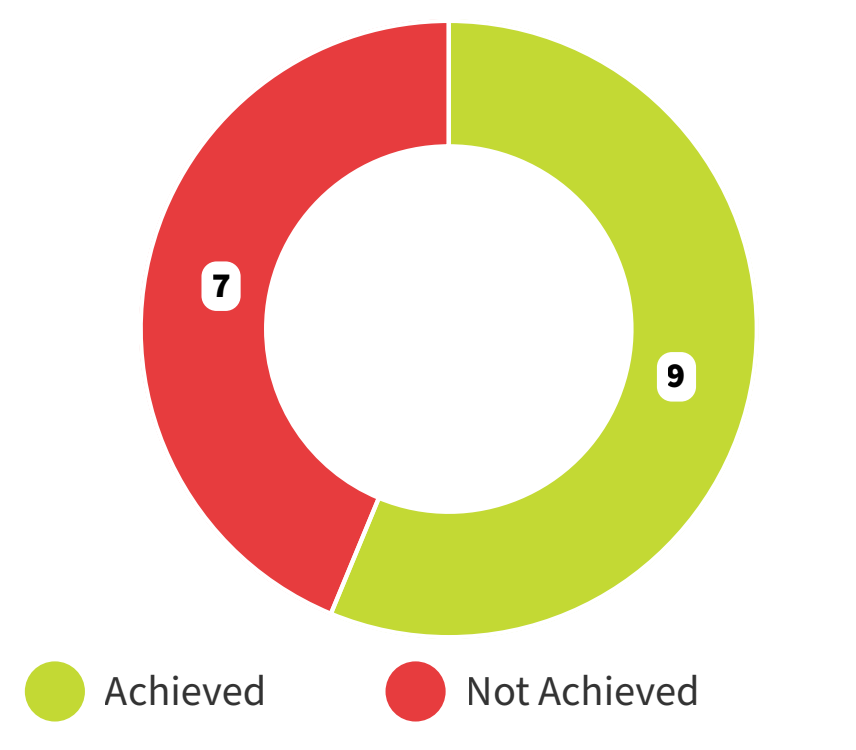Ngā waka Tūmatanui Metlink Public Transport
Greater Wellington’s Metlink Public Transport activities achieved 56 percent of their 16 performance measures this year. Of the 7 measure not achieved, 3 measures were within 2 percent of the target.
 What we deliver for public transport
What we deliver for public transport
Our public transport network, Metlink, supports more than 37 million journeys a year on bus, rail and harbour ferry services. Every day we have thousands of people travelling with Metlink and every one of those journeys matters to us.
We work with our transport operators to deliver a connected, integrated network. We have five rail lines, 90 public bus routes, more than 80 school bus services and a harbour ferry service. This network connects the wider Wellington Region, including Wellington City, Hutt Valley, Porirua, Kāpiti Coast and the Wairarapa. We are also responsible for developing and maintaining public transport infrastructure, including railway stations, train maintenance depot, bus and ferry shelters, signs, and Park & Ride facilities. We are focused on becoming a smarter, cleaner region by encouraging more people to travel by bus, train and ferry.
Metlink’s activities comprise public transport service design and delivery, public transport commercial, strategy and investments, and assets and infrastructure management. KiwiRail, a state-owned enterprise, owns and maintains the Wellington Metropolitan Rail network, and is responsible for providing and maintaining rail network infrastructure such as track, overhead power supply, signals and platforms.
Paraparaumu Transport Hub opened
On Sunday 25 August 2024, the new Paraparaumu Transport Hub opened. The hub was a joint project between Metlink and Kāpiti Coast District Council (KCDC) enabling more flexible options to access public transport services without relying on cars. In addition to providing increased frequency and more convenient connections between bus and rail services, the hub features Real-time travel information, an architecturally designed plaza, large ‘living roof’ bus shelters with more seating, a taxi parking area and additional charging infrastructure for electric scooters and bikes.
Reduced GHG emissions
There has been a reduction in greenhouse gas (GHG) emissions while air quality improves, as use of electric buses increases. The carbon footprint of the bus network has reduced, as the proportion of service kilometres travelled by electric buses increased relative to diesel buses. Air quality monitoring results show further improvements on Wellington’s Golden Mile as the percentage of electric buses on this route increases.
Milestones in achieving record use of public transport services
Busiest day on record for Wellington’s public transport network
Tuesday 19 November 2024, the day of the Treaty Principles Bill hīkoi to Parliament, was the busiest day on record for Wellington’s public transport network, with an estimated 84,000 rail journeys and 80,000 bus trips. Rail services were at full capacity as people left Parliament, with additional rail and East by West ferry services put on to meet demand. Buses were diverted from the Golden Mile as planned during the hikoi until 3pm when buses returned to usual routes.
In anticipation of a very busy day on public transport networks, Metlink staff were on hand, with some monitoring action from the Cuba St office from 4am and a large number of other staffs out on the network – directing people onto public transport, monitoring public transport impact on the ground, and feeding into the Wellington City Council operations centre to ensure the day ran as smoothly as possible for our customers
One million passengers on the Airport Express at the end of 2024
The Airport Express (AX) bus service has reached the milestone of carrying 1,000,000 passengers. The fully electric Transdev/Mana Newlands operated bus service has been running between Wellington Station and the airport since 1 July 2022. Ridership on the AX has exceeded projections and it’s great to see how popular this service is since its inception in 2022.
Highest ever monthly bus patronage recorded in March 2025
Bus passenger boardings for March 2025 were 2.59 million, which is our highest monthly patronage on record.